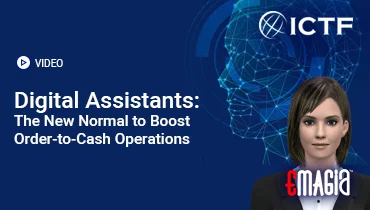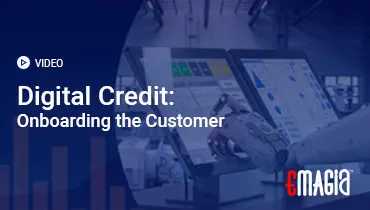In the intricate machinery of business, cash flow is the undisputed king. It fuels operations, enables investment, and dictates an organization’s ability to seize opportunities and navigate economic fluctuations. At the heart of healthy cash flow lies efficient Accounts Receivable (AR) management, and within AR, one process stands out as both critically important and notoriously challenging: Cash Application.
For many finance professionals, Cash Application in Accounts Receivable is a daily battle. It’s the laborious task of matching incoming customer payments to the correct outstanding invoices, often complicated by fragmented remittance advice, partial payments, deductions, and various payment methods. This manual burden leads to “unapplied cash,” delays in recognizing revenue, inflated Days Sales Outstanding (DSO), and a significant drain on valuable resources. The inefficiencies in this process directly impact a company’s liquidity, profitability, and even its customer relationships.
This comprehensive guide will delve deep into the world of Cash Application in Accounts Receivable, exploring its definition, the traditional challenges it presents, and the transformative power of modern solutions. We will uncover how leveraging cash application automation and advanced AI cash application technologies can eliminate manual bottlenecks, reduce errors, accelerate cash flow, and ultimately position your finance function for the demands of next generation finance. Join us as we illuminate how mastering cash application can unlock unparalleled financial efficiency and strategic advantage for your business.
I. Understanding the Core: What is Cash Application?
To truly grasp its significance, let’s start with a clear definition of this vital AR process.
Defining Cash Application in Accounts Receivable
Cash Application in Accounts Receivable is the process of accurately matching incoming customer payments to their corresponding open invoices in a company’s accounting system. Once a payment is received, the cash application team identifies which specific invoices the payment is intended to cover, applies the payment, and clears the outstanding balance in the Accounts Receivable ledger. This is a fundamental step in the Order-to-Cash (O2C) cycle.
The Importance of Accurate and Timely Cash Application
Efficient cash application is critical for several reasons:
- Accelerated Cash Flow: Prompt application means cash is recognized and available for use faster, directly improving liquidity and working capital.
- Reduced Days Sales Outstanding (DSO): Unapplied cash inflates your AR balance, artificially increasing DSO. Accurate application reduces DSO.
- Accurate Financial Reporting: Ensures that Accounts Receivable balances are correct and revenue is recognized appropriately, providing a true picture of financial health.
- Improved Collections Efficiency: Prevents collectors from chasing invoices that have already been paid, optimizing their efforts and improving customer relationships.
- Enhanced Customer Experience: Customers appreciate accurate account statements and timely application of their payments.
- Fraud Prevention: Proper application processes can help identify suspicious payment patterns or discrepancies.
This highlights why cash application is a cornerstone of financial efficiency.
II. The Persistent Challenges of Manual Cash Application
Despite its critical importance, cash application has historically been a major bottleneck for finance departments.
1. Fragmented Remittance Data: The “Remittance Headache”
Customers send payments and remittance advice through various channels and in diverse formats:
- Emails: Often with unstructured text or attached PDFs/Excel files.
- Bank Statements: With limited detail.
- Web Portals: Requiring manual login and download.
- Physical Checks: Accompanied by paper remittance stubs.
- EDI (Electronic Data Interchange): More structured, but still requiring processing.
Aggregating and extracting relevant information from these disparate sources is a time-consuming, manual process, leading to cash application problems.
2. Complex Matching Scenarios: Beyond Simple One-to-One
Payments rarely match invoices perfectly. Common complexities include:
- Partial Payments: Customers paying less than the full invoice amount.
- Overpayments: Customers paying more than the invoice amount.
- Deductions and Chargebacks: Customers taking unauthorized deductions for returns, promotional allowances, or damaged goods, requiring investigation and coding. This is a major source of cash application challenges and payment reconciliation issues for accounts receivable accounting teams.
- Consolidated Payments: One payment covering multiple invoices across different entities or customers.
- Missing Remittance Advice: Payments arriving with no clear indication of which invoices they cover.
These scenarios require significant manual investigation and judgment.
3. High Manual Effort and Human Error
The manual nature of data extraction, matching, and entry leads to:
- Resource Drain: Cash application teams spend countless hours on repetitive, tedious tasks.
- Increased Operational Costs: Higher labor costs associated with manual processing.
- Errors and Discrepancies: Manual data entry is prone to human error, leading to misapplied payments, reconciliation issues, and unapplied cash.
- Delayed Cash Recognition: The time taken for manual processing means cash sits “unapplied” longer, impacting liquidity.
This makes manual cash application a significant bottleneck.
4. Impact of “Unapplied Cash”
Unapplied cash (payments received but not yet matched to an invoice) creates several problems:
- Inflated Accounts Receivable: Makes your AR balance appear higher than it truly is, distorting financial statements.
- Higher DSO: Artificially inflates Days Sales Outstanding, masking true collection efficiency.
- Inefficient Collections: Collectors may mistakenly chase invoices that have already been paid, frustrating customers.
- Delayed Revenue Recognition: Revenue cannot be fully recognized until payments are properly applied.
Eliminating unapplied cash is a primary goal of cash application automation.
III. The Transformation: Cash Application Automation and AI
Modern technology, particularly Artificial Intelligence (AI), is revolutionizing Cash Application in Accounts Receivable, moving it from a manual burden to an intelligent, automated process.
Defining Cash Application Automation
Cash application automation refers to the use of technology to streamline and automate the process of matching incoming payments to open invoices. It aims to reduce manual effort, accelerate processing times, and improve accuracy. This is often achieved through specialized cash application software.
The Power of AI Cash Application
AI cash application takes automation to the next level by leveraging advanced Artificial Intelligence and Machine Learning (ML) capabilities. Unlike traditional rule-based automation, AI can:
- Intelligently Extract Data: Use Intelligent Document Processing (IDP) and Natural Language Processing (NLP) to read and extract relevant information from any remittance format, including unstructured emails, PDFs, and even scanned images. It learns from diverse data sources.
- Learn Complex Matching Patterns: ML algorithms continuously learn from historical payment patterns, customer behavior, and unique deduction codes to achieve higher matching rates, even for complex scenarios like partial payments or consolidated remittances.
- Reduce Exceptions: By intelligently handling complex cases, AI significantly reduces the number of “exceptions” that require manual intervention.
- Improve Over Time: The AI models continuously improve their accuracy and matching rates as they process more data, leading to a truly adaptive solution.
This makes AI in cash application a game-changer for efficiency.
Key Features of Leading Cash Application Software
A comprehensive cash application software solution typically includes:
- Multi-Channel Data Ingestion: Ability to receive remittance data from various sources (lockbox, EDI, email, web portals, bank statements).
- Intelligent Data Extraction (IDP/OCR/NLP): Automated capture of critical payment and remittance details.
- AI-Powered Matching Engine: Sophisticated algorithms for high straight-through processing rates, even for complex matches.
- Automated Deduction Management: Tools to identify, categorize, and route deductions for resolution.
- Automated Dispute Resolution Workflow Integration: Linking unapplied payments due to disputes to a dispute management system.
- Bank Reconciliation Automation: Seamlessly integrating with bank statements for automated reconciliation.
- ERP Integration: Real-time, seamless integration with major ERP systems (e.g., SAP, Oracle, NetSuite) for automated posting.
- Reporting and Analytics: Dashboards and reports on cash application rates, unapplied cash, and processing times.
These features define the best cash application software solutions.
IV. Transformative Benefits of Automated and AI Cash Application
Implementing cash application automation and AI cash application delivers a compelling array of advantages that directly impact a company’s financial performance and strategic agility.
1. Accelerated Cash Flow and Reduced DSO
By speeding up the matching and application process, businesses gain faster access to their cash. This directly improves liquidity, reduces Days Sales Outstanding (DSO), and ensures cash is recognized and available for operations, investments, or debt reduction much quicker. This is the primary benefit of cash application automation.
2. Significant Operational Efficiency and Cost Reduction
Automating the labor-intensive tasks of data extraction and matching frees up cash application teams from tedious, repetitive work. This leads to substantial operational efficiencies, reduced labor costs, and allows personnel to focus on higher-value activities like resolving complex deductions or analyzing payment trends. It’s a hallmark of accounts receivable automation.
3. Enhanced Accuracy and Elimination of “Unapplied Cash”
AI-powered automation drastically minimizes human error in data transcription and matching. This results in cleaner, more reliable AR data, virtually eliminating “unapplied cash” and reducing reconciliation discrepancies. Accurate application means accurate financial statements and a true picture of AR health.
4. Improved Customer Experience and Relationships
Prompt and accurate application of payments means customers receive correct account statements and don’t get unnecessary collection calls for invoices they’ve already paid. This reduces customer frustration, builds trust, and fosters stronger relationships.
5. Better Insights and Strategic Decision-Making
With clean, real-time data from automated cash application, finance leaders gain accurate insights into payment behavior, cash flow trends, and customer payment patterns. This enables more informed, data-driven decisions regarding credit policies, collections strategies, and overall financial planning.
6. Scalability for Growth
Automated cash application can handle increasing transaction volumes and customer bases without requiring proportional increases in headcount. This allows businesses to scale their AR operations efficiently, supporting growth initiatives and maintaining high service levels.
V. Implementing Cash Application Automation: Best Practices and Considerations
Adopting cash application automation requires careful planning and a strategic rollout to maximize its impact.
1. Data Readiness and Standardization
The foundation of successful automation is clean, accessible data. While AI can handle unstructured data, standardizing remittance formats where possible and ensuring data quality from your ERP and banking systems will optimize performance. This is crucial for effective cash application in accounts receivable.
2. Phased Approach and Pilot Programs
Consider a phased approach, starting with a pilot program for a specific payment channel or customer segment. This allows your team to learn, adapt, and build confidence in the technology before scaling across the entire cash application function. This iterative process is key for effective adoption.
3. Seamless Integration with ERP and Banking Systems
Invest in a solution that offers robust, API-driven integration with your core ERP (e.g., SAP, Oracle, NetSuite), accounting software, and all your banking partners. Real-time data synchronization is essential for automated posting and accurate financial reporting.
4. Focus on Exception Handling
While AI aims for high straight-through processing, exceptions will always occur. Ensure the chosen software has intuitive workflows for managing and resolving these exceptions efficiently, allowing human intervention where necessary. This is where the cash application specialist role evolves.
5. Continuous Learning and Optimization
AI models are designed to learn and improve over time. Continuously monitor the software’s matching rates, provide feedback on exceptions, and leverage its self-learning capabilities to refine its accuracy and effectiveness. This ongoing optimization ensures the solution remains cutting-edge.
6. Change Management and Training
Successful adoption hinges on enthusiastic user engagement. Provide comprehensive training for your cash application team on how to interact with the automated system, interpret its outputs, and manage exceptions. Emphasize how automation augments their roles, freeing them for more strategic work.
Emagia: Pioneering Autonomous Finance with Intelligent Cash Application
For enterprises seeking to achieve unparalleled efficiency and accelerate cash flow, Emagia offers a transformative, AI-powered Autonomous Finance platform that includes a leading-edge Cash Application solution. Emagia’s approach goes beyond traditional cash application automation; it leverages cutting-edge Artificial Intelligence to intelligentize the entire process, making it the best cash application software for modern businesses.
Emagia’s Intelligent Cash Application Cloud, GiaCASH AI, is at the forefront of this transformation. It is specifically engineered to address the most complex challenges of Cash Application in Accounts Receivable by:
- Intelligent Remittance Data Ingestion: GiaCASH AI can ingest and intelligently extract remittance details from virtually any source and format—including unstructured emails, diverse bank files, web portals, and even scanned images of checks—with high accuracy.
- AI-Powered Matching Engine: Leveraging advanced Machine Learning algorithms, GiaCASH AI automatically matches incoming payments to outstanding invoices with extraordinary precision, even for partial payments, complex deductions, or consolidated remittances across multiple entities.
- Automated Exception Handling: For the few exceptions that require human review, GiaCASH AI provides intuitive dashboards and workflows that highlight the discrepancies, making it easy for cash application specialists to investigate and resolve them quickly.
- Seamless ERP Integration: GiaCASH AI integrates in real-time with major ERP systems (e.g., SAP, Oracle, NetSuite), ensuring that payments are automatically posted to the correct accounts, eliminating manual journal entries and reconciliation delays.
By dramatically reducing unapplied cash, accelerating cash recognition, and freeing up valuable finance resources, Emagia Cash Application empowers businesses to achieve superior liquidity, reduce DSO, and gain unprecedented visibility into their cash flow. It transforms cash application in Accounts Receivable from a manual bottleneck into a strategic asset, positioning organizations for the demands of next generation finance.
Frequently Asked Questions (FAQs) About Cash Application in Accounts Receivable
What is Cash Application in Accounts Receivable?
Cash Application in Accounts Receivable is the process of accurately matching incoming customer payments to their corresponding open invoices in the accounting system, applying the payment, and clearing the outstanding balance. It’s a critical step in converting sales into recognized cash.
Why is efficient Cash Application important for businesses?
Efficient Cash Application is important because it accelerates cash flow, reduces Days Sales Outstanding (DSO), ensures accurate financial reporting, improves collections efficiency by preventing calls for paid invoices, and enhances the overall customer experience. It’s vital for healthy accounts receivable accounting.
What are the main challenges in Cash Application?
Main challenges in Cash Application include fragmented remittance data (from various sources and formats), complex matching scenarios (partial payments, deductions, consolidated payments), high manual effort, and the resulting “unapplied cash” that distorts financial records.
How does AI Cash Application work?
AI Cash Application works by using Intelligent Document Processing (IDP) and Machine Learning to intelligently extract data from any remittance format and automatically match payments to invoices. AI algorithms learn from past patterns to achieve high matching rates, even for complex scenarios, significantly reducing manual exceptions.
What are the benefits of cash application automation?
Benefits of cash application automation include accelerated cash flow, reduced DSO, significant operational efficiency and cost reduction, enhanced accuracy, elimination of “unapplied cash,” improved customer experience, and better insights for strategic decision-making.
Can cash application software integrate with my existing ERP system?
Yes, leading cash application software solutions are designed for seamless, real-time integration with major ERP systems (like SAP, Oracle, NetSuite) and accounting software. This ensures automated posting of payments and accurate synchronization of financial data.
What is “unapplied cash” and why is it a problem?
“Unapplied cash” refers to payments received by a company that have not yet been matched and applied to specific outstanding invoices. It’s a problem because it inflates Accounts Receivable, distorts DSO, leads to inaccurate financial reporting, and can cause unnecessary collection efforts for already-paid invoices.
Conclusion: The Strategic Imperative of Automated Cash Application
In the relentless pursuit of financial stability and growth, mastering Cash Application in Accounts Receivable is no longer just an operational task; it is a strategic imperative. The shift from manual, error-prone processes to intelligent, automated solutions is transforming how businesses manage their most vital asset: cash.
By embracing cash application automation and leveraging advanced AI cash application technologies, organizations can unlock unparalleled efficiency, accelerate cash flow, virtually eliminate unapplied cash, and significantly reduce Days Sales Outstanding. This not only optimizes financial performance but also enhances customer relationships and empowers finance teams to focus on strategic analysis rather than administrative burdens. Investing in the best cash application software is investing in the financial agility and future success of your business, positioning it for the demands of next generation finance.



